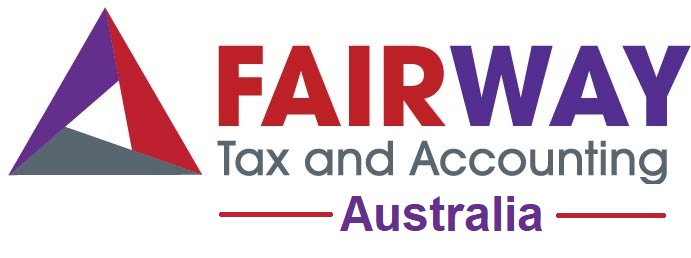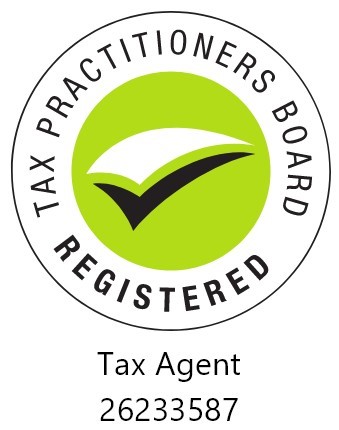Personal concessional superannuation contributions may be tax-deductible in your income tax return, but what’s the catch?
Age Limits
Personal concessional contributions are non-mandated contributions and can only be accepted for members under 75 years of age.
So, you can only make these contributions if you are under 75 or the contribution is received by the fund no later than 28 days after the end of the month in which you turn 75.
Concessional Contributions are tax-deductible, Non-Concessional Contributions are not
Not all superannuation contributions are the same. To be able to claim a tax-deduction you need to make a concessional superannuation contribution. That can either be done via:
- Qualifying salary-sacrifice through your employer’s payroll or
- Making a personal contribution out of your net income*
*If you want to claim a tax-deduction for a personal contribution in your 2025 tax return:
- The contribution needs to be made and received by the fund by 30 June 25 and
- You need to submit a declaration to the superfund to tell them you want the contribution to be treated as concessional – otherwise they will treat it as non-concessional – which is not deductible.
Most funds have their own version of the declaration form or have a process, but if not, you can find the form on ATO’s website here https://www.ato.gov.au/forms-and-instructions/superannuation-personal-contributions-notice-of-intent-to-claim-or-vary-a-deduction
Have you enough Concessional Caps?
The Australian Government set a maximum threshold for concessional contributions to superannuation each year – the Concessional Contributions Cap “the Cap”.
If your concessional contributions in a tax year exceed the Cap you will be taxed at your marginal tax rate on the excess contributions, i.e. the excess concessional contributions will be added to your Taxable Income and taxed.
The cap for 2025 is $30,000.
Note that contributions made by your employer under the Superannuation Guarantee are concessional contributions – so these will use part of your cap for the year.
However, if you have not fully used your cap in the previous 5 years (so for 2025 that means for 2020 to 2024), provided your total superannuation balance did not exceed $500,000 at 30 June 2024 (combined balance for all superannuation funds, if you have more than one), you can carry-forward the unused parts of your caps for those years.
As long as the total amount of concessional contributions in the tax year (both employer and personal) don’t exceed the sum of the 2025 Cap and the available carry-forward, there are no excess contribution charges.
If you are not sure of the value of your unused concessional cap, ask us.
Don’t my contributions get taxed though?
Yes, all concessional contributions are taxed when they enter the superannuation fund, but in most cases only at 15%*. The examples below, show that even taking this into account there is the potential for significant tax-savings through making personal concessional contributions to superannuation.
*Note: The tax-rate may be higher than 15% in the fund if Division 293 tax is due (see below) and the taxpayer chooses that the fund pays the Division 293 tax
What about Division 293 tax?
Division 293 tax is an additional tax applied to the concessional superannuation contributions of high-income earners. Division 293 tax applies when your Adjusted Taxable Income plus value of Concessional Contributions in a year exceed the Division 293 threshold, currently $250,000.
The excess contributions over the threshold have an extra 15% tax applied to them, the Division 293 tax charge – to bring the total tax liability on these contributions to 30%.
The Division 293 assessment is raised by ATO each year, after the Income Tax Return is lodged and processed, for taxpayers who breach the threshold.
Taxpayers have a choice to either:
- Pay the Division 293 tax themselves or
- Complete forms to release funds from their superannuation to pay the tax
How are Superannuation Funds taxed?
Superannuation funds pay tax on their investment growth, but provided they remain complying Australian superannuation funds, the tax is at concessional tax rates.
For most superannuation funds this means that investment growth is taxed at a maximum of 15%.
There has been a lot of discussion in the press about the current Government’s plans to introduce an additional tax, known as Division 296 tax, to superannuation funds with balances in excess of $3m. The proposal has not yet been legislated, and was facing considerable opposition in Parliament prior to the election. However, the recent re-election of the Labour Government with an increased majority may result in the passage of the legislation, though it is unclear yet whether the originally proposed implementation date of 1 July 2025 will be pushed back, if the bill passes. We also need to wait to see the final form of the legislation, to be clear how it will work.
However, if passed per the announced proposal, the new legislation would apply an additional 15% on the part of a superannuation fund’s annual earnings that accrue on balances in excess of $3m. To be clear they are not proposing to tax the balance of the superannuation fund – but only the growth on the part of the balance that exceeds $3m.
Example
James has a superannuation fund with a balance of $3.5m at the end of the tax year
The balance at the start of the tax year was $3.25m
James has made no contributions to the fund in the year, and no withdrawals so the change in balance is purely due to investment growth.
The growth in the fund is therefore $250,000. Of that growth ($250,000/$3,250,000 ) = 7.69% relates to the part of the balance exceeding $3m
So, $19,225 of the growth would be taxed at 30%, whereas $230,775 would only be taxed at 15%
For high-income earners (who are most likely to accrue balances of more than $3m) – this still represents a significant tax-saving compared to having investments in their own hands, on which investment income would be taxed at 47% including the Medicare Levy.
The main issue with the Division 296 tax is that superannuation balances can fluctuate as the values of underlying investments change – for example many superannuation funds experienced a dip in the early part of 2025 due to market uncertainty following the implementation of US tariffs. So, by applying the tax to superannuation funds you are taxing unrealised growth. You could apply the tax at the end of 2026 and that growth could have disappeared by the end of 2027 – if there was a dip in the markets.
As noted, we will need to wait to see the final form of this legislation. However, since it is only proposed to apply to superannuation funds with balances in excess of $3m, for many taxpayers with superannuation balances much lower than $3m, it is not an immediate concern.
When can I get access to the money in my Superannuation?
When making contributions to your superannuation fund, you need to understand that the funds contributed will be “locked” until you meet a condition of release.
Normal Conditions of Release
In normal circumstances the superannuation balances cannot be accessed until you meet one or more of the following conditions of release:
- You reach your preservation age and retire
- You reach your preservation age and commence a transition to retirement pension
- You cease an employment arrangement after the age of 60
- You turn 65 (even if you haven’t retired)
- Death
What is Preservation Age?
This depends on your date of birth, the following table summarises the position:
Date of Birth |
Preservation Age |
| Before 1 July 1960 | 55 |
| 1 July 1960 to 30 June 1961 | 56 |
| 1 July 1961 to 30 June 1962 | 57 |
| 1 July 1962 to 30 June 1963 | 58 |
| 1 July 1963 to 30 June 1964 | 59 |
| After 30 June 1964 | 60 |
There are some special situations too, when you can access superannuation without having met a normal condition of release.
Special Conditions of Release
Each has special conditions and restrictions:
- Terminating gainful employment
- Permanent incapacity
- Temporary incapacity
- Severe financial hardship
- Compassionate grounds
- Terminal medical condition
- First home super saver scheme
Why is growing my Superannuation balance good from a tax perspective?
There are two key reasons that superannuation is a tax-efficient investment.
- In most cases*, the investment growth in the fund is taxed at only 15%, whereas investments owned by individual taxpayers may be taxed at rates up to 47% (including Medicare Levy)
- For Australian-resident taxpayers, superannuation withdrawals derived from concessional contributions are taxable-taxed withdrawals – when drawn after the age of 60 these are tax-free for the recipient (whether pension income or lump sum)
*See comments on proposed Division 296 tax, above.
What if I leave Australia and retire in another country?
The tax treatment of withdrawals from Australian superannuation, if you are resident in another country at the time of the withdrawal, will depend on that country’s tax rules and the terms of any Double Tax Treaties that country has with Australia.
It is possible that what would be tax-free retirement income from Australian superannuation may become taxable income, if you are resident outside Australia. This would be the case if, for example, you moved to the UK.
If you expect to be resident somewhere other than Australia when you retire, you should consider the implications of that before deciding whether to invest in superannuation.
Examples
Jane’s Taxable Income for 2025 is estimated as $165,000. She sold some shares during the year, which generated a taxable Capital Gain, which contributes to that figure.
She is prepared to contribute $25,000 of the capital gain sales proceeds to her Australian superannuation fund:
- She has sufficient unused Concessional Contribution Caps and
- Her total superannuation balance on 1 July 2024 was $210,000, so she can use carry-forward contributions.
Jane submits the declaration to her superannuation fund to treat the personal contribution as concessional. Jane’s employer has already contributed $11,000 to her superannuation fund during the year.
With Taxable Income of $165,000, Jane’s marginal tax band for 2025 is 37% – meaning that with the Medicare Levy the top $30,000 of her taxable income is taxed at 39%.
The $25,000 personal contribution is tax-deductible. The deduction will reduce the tax liability in Jane’s Income Tax Return by $25,000 x 39% = $9,750.
The contribution will be taxed in the superannuation fund at 15% – $25,000 x 15% = $3,750, so Jane’s superannuation fund balance will increase by $25,000-$3,750 = $21,250
Jane is below the Division 293 threshold, so no Division 293 charge is levied.
So, the net tax saving for Jane, taking account both personal income tax and tax in the superannuation fund is $9,750-$3,750 = $6,000
Robert received a large performance bonus in 2025, resulting in his 2025 Taxable Income being estimated at $270,000. He has unused carry-forward concessional contribution caps of $19,000. His employer contributions for 2025 total $21,000. His total superannuation balance on 1 July 2024 was $487,000.
Robert decides to make a personal contribution of $20,000 before 30 June 2025. He submits the declaration to his superannuation fund to treat the contribution as concessional.
Robert’s contribution will use the $9,000 remaining in the 2025 concessional cap and $11,000 of his unused carry-forward caps from prior years.
With his estimated Taxable Income of $270,000, $80,000 of Robert’s income will be taxed at 47% (including the Medicare Levy). Claiming the tax-deduction for the personal superannuation contribution will save him $20,000 x 47% = $9,400
The contribution will be taxed in the superannuation fund at 15% – $20,000 x 15% = $3,000, so Robert’s superannuation fund will increase by $20,000-$3,000 = $17,000
Since Robert’s taxable income is over the Division 293 threshold, there will also be a Division 293 charge on his personal contribution* – the Division 293 charge on the personal contribution will be 15% x $20,000 = $3,000. Robert can either pay that himself or release the funds from his superannuation fund. Robert decides to pay it himself.
So, the net tax saving is $9,400 -$3,000 – $3,000 = $3,400
So, you can see that while the Division 293 tax charge has reduced the tax-saving, there is still a tax-saving.
NOTE: Since Robert’s Total Superannuation Fund on 30 June 2025 will be $487,000 + $17,000 = $504,000 – he will lose the remaining $8,000 unused carry-forward concessional cap. So, for 2026 he will only be able to use the remaining unused 2026 cap, after deducting his employer contributions, to make a personal contribution.
*Note that there will also be a Division 293 charge on his employer concessional contributions but the purpose of this example is to look at the tax effect of the personal contribution only
Summary
There are tax benefits to be had from making personal superannuation contributions, but it is important to ensure you have a full understanding of the implications before doing so.
Fairway Tax and Accounting is not authorised to give financial advice, only tax advice. The comments above are intended as tax advice only and are not intended to be financial advice, neither should they be construed as financial advice.
Like all investments, superannuation can go up or down. We recommend that you speak to a registered financial adviser in relation to all financial decisions including whether or not to invest in superannuation.



